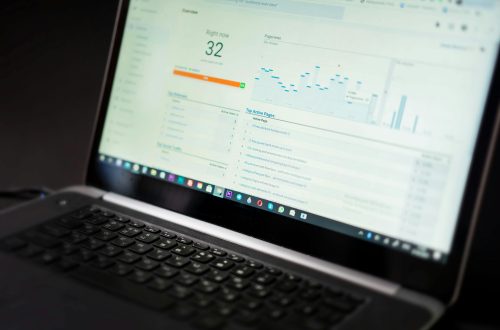
The Past and Future of Backlinks: Building Authority in 2024
Link-building is getting backlinks from similar websites that link to your website, commonly known as inbound links. These backlinks work exactly like a “vote of confidence” from alternative websites. They strengthen your search engine ranking and visibility and lead to additional traffic through direct searches (related keywords) and forums.
That being said, there is more to a backlink than just the URL it leads you to. The quality of backlinks is what Google cares about, rather than the number. One quality link from a relevant, high-authority site holds much more value in SEO than hundreds of spam links or low-quality websites.
Many websites fall into a trap that usually comprises 100 no-follow backlinks from low-quality sites linking to your page. Remember, it will not give the same results as 10 do-follow links obtained from similar, authoritative sources.
The Importance of Link-Building Throughout The Years
In the early days of the Internet, the search engine landscape was quite competitive. There were several key players, including AltaVista, Excite, Lycos, and Yahoo. At that time, search engines fell into two main categories:
- Crawl-Based: These search engines, similar to what Google does today, crawled the web and added various websites to their directories.
- Human-Powered: These search engines relied on editors who manually reviewed and approved websites before adding them to the search directory.
So, how did you rank your pages back then? The strategy was simple: “keyword stuffing”. If a competing page used a keyword 100 times, you could outrank it by using the same keyword 200 or even 300 times!
2. The Spam Era
This approach worked up to a point when Larry Page and Sergey Brin brought in BackRub, which was the earlier version of Google. That was the first search engine to use links as the only “on-the-page” snippet of information.
BackRub looked at both on-page factors, including the geometric density of the keyword in the beginning, middle, and end. Along with that, it also considers the quality juice passed by (do-follow) links with anchor text match. It was a simple idea that if people are linking to this page, it reads as important and, therefore, might be something others should read too.
That concept changed the whole face of SEO. Although this made information on the net so much more reachable, it came with significant flaws. When the internet search engines rose to prominence, it was touted that Google based its ranking on counting backlinks (inbound links) with an implication of better quality and meaningful text in these.
As this algorithm started to gain popularity, SEO professionals quickly realized that to rank high, they needed backlinks, and as is the case with any other algo out there, people soon began spamming it. They built thousands of forum links, blog comments, and directory listings alongside every Web 2.0 page they could think of. So fast forward to the mid-2000s, and the automated link-building tools would pump out hundreds of thousands of backlinks at scale with barely any effort.
But what about the content with quality lagging? When much of that content was spun or copied from elsewhere, the result often looked like simply doorways to pages made by multiple backlinks, and it wasn’t even readably good. The main objective was to help AdSense’s income, and nobody cared about the purity of the substance. This massive manipulation became a big problem for Google, and it was clear that something had to be done.

3. The War on Spam
Over the years, Google has released numerous algorithm updates aimed at reducing spam and improving search result quality. Here is the breakdown of some major ones,
Florida Update
Launched in November 2003, Google introduced its Florida Update, a big step towards changes against manipulative SEO. It did so by statistically analyzing the backlink patterns of sites created for link spam.
The process also detects the creation and computation issues related to cross-website linking. With the changing algorithm, Google started to remove sites that were using SEO techniques just for gaming better positions, and overnight, many businesses lost their rankings.
Google Panda Update
This update was designed to target what Google considered poor or “thin” content and lower the site rankings of that thin content. It was aimed mainly at content farms, duplicate and low-quality websites, and sites that had an over-the-top ad-to-text ratio. The Panda Update was a major pivot toward rewarding sites with better quality in the SERPs.
The Penguin Update
The Penguin update was introduced to target domains involved in black-hat techniques like link schemes and keyword stuffing. The emphasis of Penguin is to give a penalty for sites with outbound links that are manipulative and/or low quality, which in turn reinforces the philosophy about natural, high-quality linking.
Hummingbird
It was not an update like the other updates above; it could be thought of more as a complete replacement for Google’s core algorithm. Hummingbird was designed to make Google better at understanding what a user is likely searching for when they perform a search and understand the intent of how we phrase our searches so it could interpret context. This allowed Google to show results that it regarded as matching what the user meant, even if they were not an exact keyword match.
Why Will Links Be Even More Important In The Future?
There are currently two major SERP-disrupting issues at work. First, there is the advent of AI-created writing. You can generate an article that matches search intent and provides some worth to users in only a few moments.
That has indeed opened the gates for everybody to start creating content, very much like in pre-Panda days when the quality of content mattered a little less. Naturally, this means that the old era of “just write good content, and you’ll rank” has less resonance now. Detractors would say AI-generated content is sterile and devoid of originality, but that brings us to the second issue in SERPs, that is, search intent.
You can search any keyword today, and you will see that nearly all of the articles on page one look very similar. You structure them similarly, they follow similar headings, and occasionally, they even share the same titles.
Some are better at explaining or offering more detail, but the basic material is essentially identical. For instance, if you attempt to write a post with original insight or by itself, it is in addition to what has already been written about the query that currently ranks instead of before. Well, this is what the SERPs look like today.
As it stands, this makes Google a poor candidate for trusting on-page factors exclusively (since other engines may be considerably better at interpreting these signals than they are). Yes, Google can detect AI-generated content with a penalty, but remember that Google is also in business, and detecting such content requires energy, which translates into a fortune.
Conclusion:
Nonetheless, Google keeps making changes to improve the quality of search results. But perfect search engine results pages (SERPs), where the best content always wins, have become elusive. If backlinks become more integrated into the algorithm again, having higher standards for link quality will be necessary. If not, then it is in danger of reverting to the old days full of rubbish and low-quality link schemes we have experienced before Penguin. Backlinks will be even more important, but sourcing links that satisfy Google’s enhanced expectations is going to become a lot tougher.





